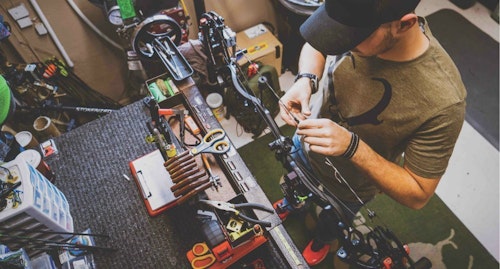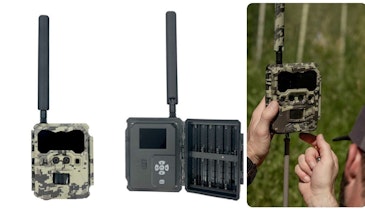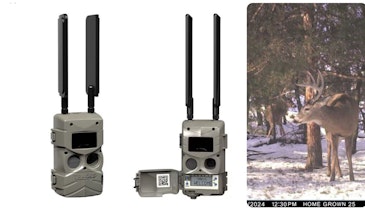Today’s bowhunters are putting more thought into their arrow setups. Instead of just grabbing the cheapest arrow and calling it good, they’re paying attention to things like the number of fletching, experimentation with different spines, FOC, trying to achieve that perfect arrow weight.
Trends that circulate in the hunting media have a considerable influence over what people do and don’t do with their setups. So much so that many folks don’t even understand why they are choosing one over another. It’s just what they heard “so and so” did, so they want to do it too.
Pro shops can take advantage of their vast expertise to save the day. Educating the hunter on the “why” surrounding arrow weights will help not only strengthen the relationship between shop and customer but send the hunter afield correctly equipped for their hunt. Educating consumers about why arrow weight matters will set your customers up for success, which in turn sets you up for success as a pro shop.
Here are a few questions to make sure to ask your customers to ensure you put the correct arrow in their quivers.
Ask the Right Questions
Each customer is different, so it all starts with them. Knowing the right questions to ask is the first step in figuring out what arrow weight is going to reflect their wants and needs as a bowhunter or archer. Knowing as many details as possible will make it much easier to help each individual distinguish the different uses of a lightweight, middle-of-the-road and heavy arrow weights. Here are some things to think about that will get you the answers you need.
Recently, I had a conversation with Josiah Richards, owner of Ross Outdoors in Phoenix Arizona, about the approach that he and his team take to provide customers with the right arrow and arrow weight for them. The following is a reflection of that discussion.
Intended Use
Finding out what a customers’ intentions are with an arrow is all about feeling them out to understand precisely what they need and want the arrow to do. Mindsets will vary widely from newcomers to experienced archers. Newcomers just know they need arrows and will rely heavily on your expertise. Experienced archers will often know precisely what they want. Sometimes they won’t be willing to budge on their decision, which is fine. Still, knowing the species they will be pursuing, goals concerning speed or penetration; and, of course, their budget, are all things that will help to smooth the arrow-selling process rolling.
New Archers
Now, keep in mind, newcomers might not know the exact answers to questions like if they’re looking for maximum speed or penetration. It’s up to you as the pro to guide them through this process, highlighting the pros and cons of the various choices. Explain the tradeoffs between a light arrow (speed) and a heavier arrow (penetration). In most cases, a middle-of-the-road arrow will take care of most new archers. They’re a great starting point and are generally more affordable than the extremes of either end weight wise. So, spend the time and set them on the right path. Whether that means 15 minutes or 90 minutes. During your explanation, make sure to discuss other aspects of arrow weight, such as spine. A new-to-archery customer might think that the number on the arrow is its weight, which is inaccurate. In general, dealing with people that are new to the sport is incredibly easy and fun. These cases are the perfect time to create a road map for success concerning arrow flight, performance and weight. Having sample arrows on hand in different weights is a great way to show both new and experienced archers how their bow will react to different arrows weights.

Experienced Bowhunters
Experienced bowhunters can be either super easy or more difficult to please. Someone that has been there done that, but is open to new ideas, is a pleasure to work alongside. A person that is set in their ways though usually isn’t up for changing those ways, and that’s fine. It’s generally not worth the time to pry at these types of customers. If their setup is working for them, leave it be. However, if you happen to see something that is hurting their arrow game, or them about to make a poor decision with their setup, rather than just tell them something is wrong, show them. Things can be far easier to ingest visually, and the proof is in the pudding for them to see. Seeing is believing.
If you feel it’s worth your time, spend time on the range. Have your experienced archers shoot various arrows through a chronograph or through paper to show them more about what is going on concerning arrow flight. An experienced archer might be completely comfortable with the weight, speed and penetration of their arrow but not wholly understand the tuning process. Not all setups are going to tune the same, and that’s something not everyone realizes, even experienced archers from time to time.
Internet Experts
I’m sure you’ve all dealt with someone that comes in the shop and knows everything before they walk in the door. We live in a digital age, and there is an endless amount of information available at our fingertips. The bad thing is, not all of that information is good, and customers don’t always know “why” they are asking for a particular arrow weight, for instance. They know that “so and so” uses a 600-grain arrow, so that’s what they want.
As an expert, assess each situation individually and cautiously. Listen to why they’ve come to this conclusion and go from there. If the 600-grain arrow makes sense for what they are trying to achieve, then call it good. But, if they are just trying to go that route just to do so, it’s time to step in, especially if you know this decision is going to hurt their setup. Go over the disadvantages of their choice and discuss the advantages of another.
Lightweight Arrows
Watching an arrow, or should I say, trying to watch an arrow zip towards a target at lightning-fast speed, is downright intoxicating. In a hunting scenario, it makes sense for folks to think that the faster the arrow, the quicker it will get to the animal. While this is true, it’s essential that we lay out the pros and cons of a lightweight arrow too. For instance, lightweight arrows cause bows to be louder on the shot. So, while the arrow might get to the animal faster, the animal is more likely to duck the string at the sound of the bow.
Additionally, lightweight arrows are going to provide less penetration. Penetration might not be a big deal for something like a Pronghorn antelope, but for an elk, it is. That is a different beast entirely that will be better handled by a different arrow.
Heavier Arrows
On the other end of the spectrum are heavy arrows. Shooting heavy arrows is becoming more popular in the bowhunting world, causing more hunters to gravitate towards them. Advantages to point out to customers are things like more penetration and quieting the bow. While these are some significant advantages, it’s essential to lay out the disadvantages as well.
In many cases, a heavier arrow is a specialized arrow, requiring specialized components. Specialized arrows might not be the best option for a beginner who isn’t as invested. For the experienced archer, though, that’s another story and generally who ends up going this route or the other end of the extremes. Something else to mention about heavy arrows is not being able to reach out as far. The heavier the arrow, the more aggressive the arrow arch in flight. Bowsight pins can be moved only so much, and these will test the limits because they are slower.
Midweight Arrows
The majority of archers will fall into this category. Not everyone out there is hyper-focused on arrow details or hunting big game or arrow flight. So, for the new archer, a middle-of-the-road arrow weight is going to fit the bill nine times out of 10. They are a fantastic blend of speed, trajectory and penetration.
Final Thoughts
Your pro shop is a place for bowhunters to turn for answers, reassurance, and of course, a good hunting story. Arrow weight is one of those topics that may help you, the pro, connect with your customer(s) on a new level. When it does, it’s important to remember to assess each customer individually, as each setup is unique. Molding each customer interaction to provide the most precise outcome is truly a relationship-building exercise. Regardless of the topic, arrow weight, or any other, the goal should always be a truthful explanation to help the consumer make the correct choice for them. Nobody masters a game on their own. Mentors are needed to guide archers along the way. . . . mentors like you.







